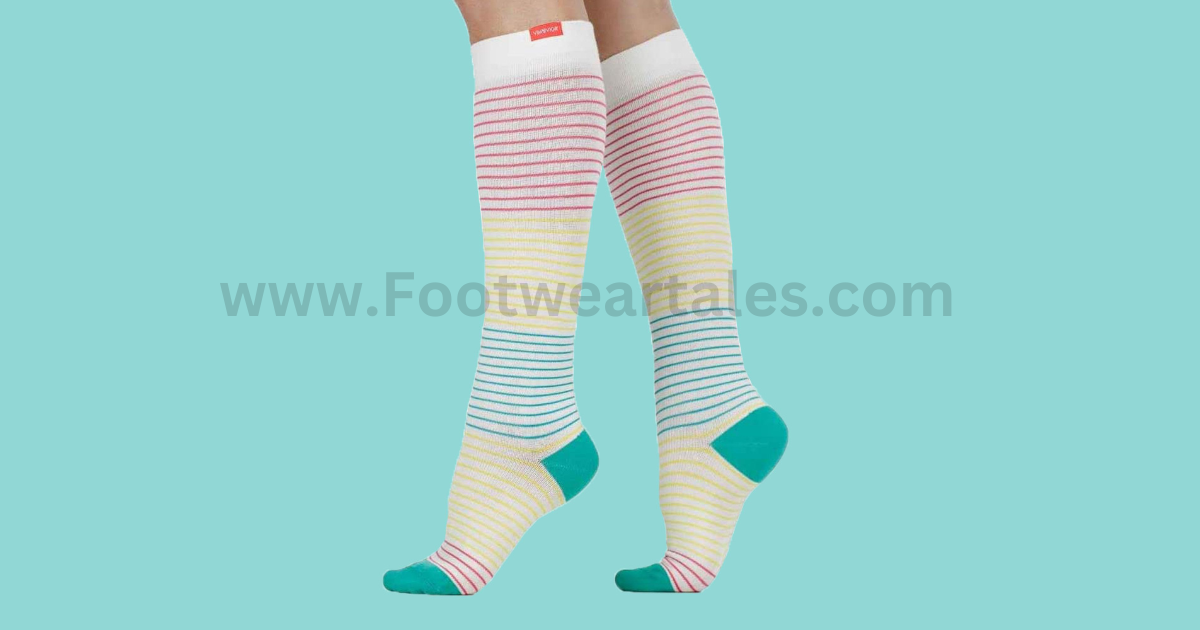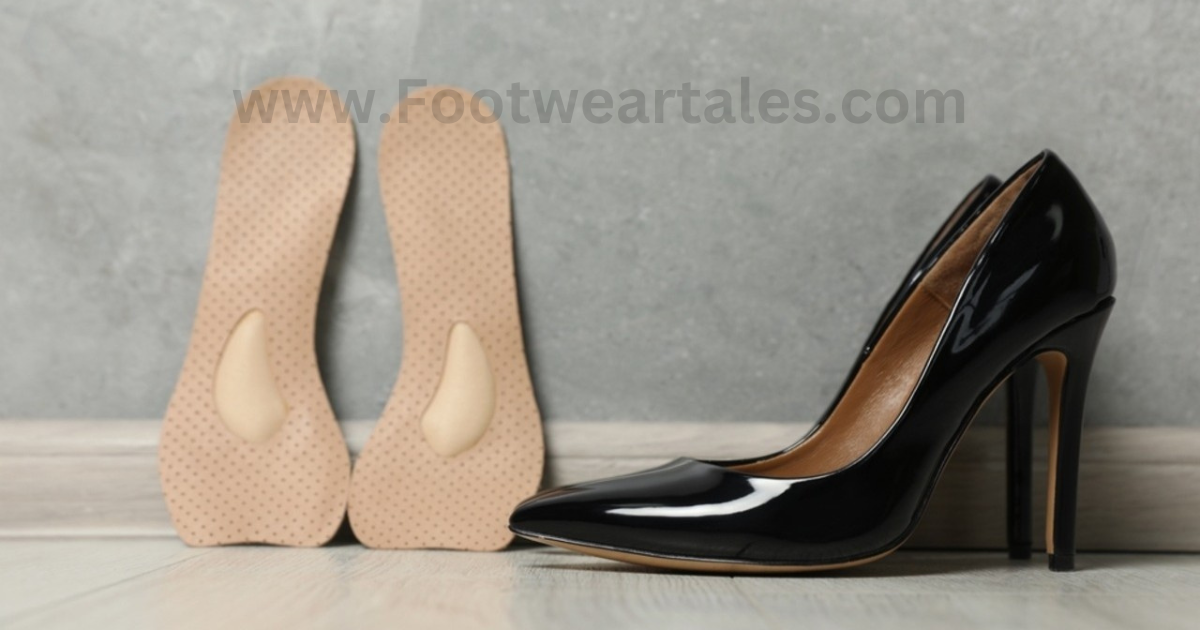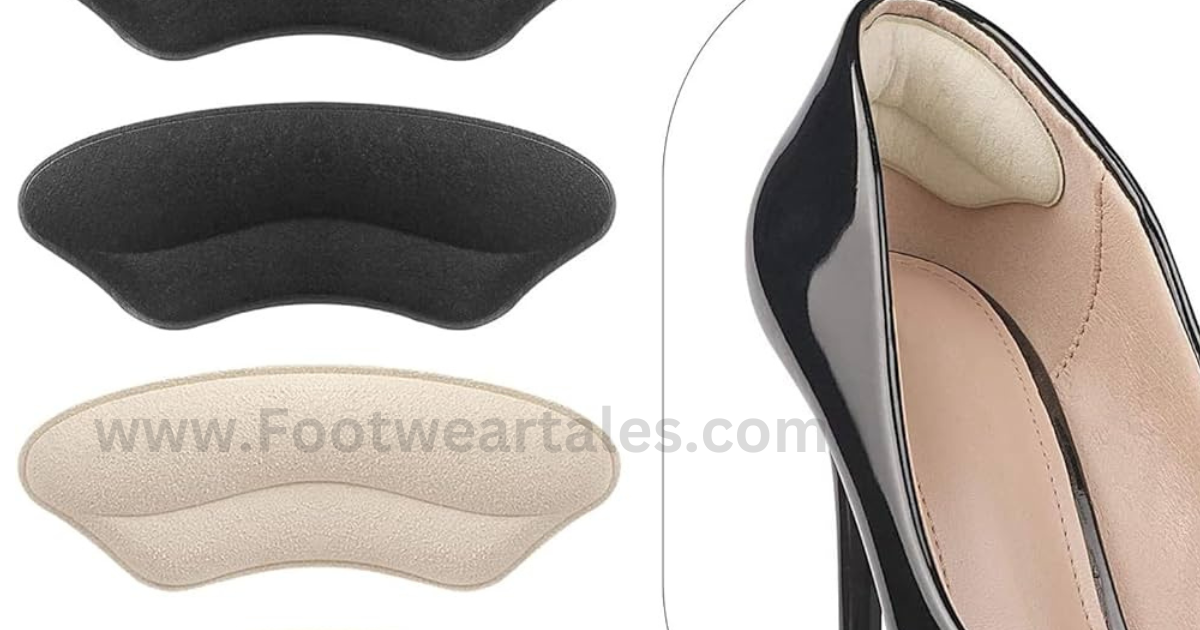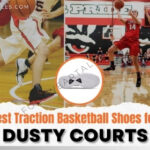Suppose you’ve ever experienced the agony of shoes digging into your heels. In that case, you know just how frustrating and uncomfortable it can be and how to stop shoes from digging into your heels, whether it’s a new pair that seemed perfect in the store but turned out to be torturous after a few hours of wear or an old favourite that has suddenly become a heel-hating menace, fear not! In this article, we will uncover the secrets to stopping shoes from becoming heel-digging devils. Say goodbye to blisters and hello to happy feet as we reveal the tricks of the trade for finding the perfect shoe fulcrum.
Understanding The Issue (How to Stop Shoes From Digging Into Your Heels)
It’s important to note that different styles of shoes can contribute differently to this problem. Heels with thin straps or stiff materials are more likely to dig into the skin and cause discomfort than sneakers or flats made from soft and flexible fabrics. Additionally, factors such as incorrect sizing, lack of support in the shoe’s design, or even walking forcefully can exacerbate this problem. To stop shoes from digging into your heels, it is vital to address these underlying causes individually rather than relying solely on temporary fixes like band-aids or cushions.
How to Avoid Shoes From Digging Into Your Heels
One of the most common and incredibly frustrating shoe-related problems is the uncomfortable digging sensation in your heels. It can turn a perfect day into an unbearable one. Fortunately, there are several strategies you can employ to prevent this agony from occurring.
Best 16 Methods to Stop Shoes From Digging Into Your Heels
Following are the best 16 methods that you can use to stop shoes from digging into your heels.
Method 1: Choose The Correct Size
It can be not only uncomfortable but also frustrating when you’re trying to look stylish and put-together, only to be plagued by painful blisters and irritated skin. The solution may lie in choosing the correct size. One common mistake is assuming their shoe size will always remain the same.
However, our feet can change in size over time due to weight gain or loss, pregnancy, or ageing. That’s why it’s essential to measure your feet regularly and ensure you wear the right size for your current foot shape. Different brands may have slight variations in sizing, so it’s always a good idea to try on different models before purchasing.
Certain styles, like high heels or pointed shoes, tend to be narrower at the front, which could lead to discomfort if you have wider feet. Feel free to experiment with different sizes or widths until you find the perfect fit for your foot shape.
Method 2: Wearing The Proper Socks

When preventing shoes from digging into your heels, wearing the proper socks can make all the difference. We often overlook the importance of selecting the right socks for our footwear, but they act as a supportive barrier between your feet and shoes.
Opt for socks with cushioned soles or padding in critical areas to provide extra comfort and protection. Not only will this prevent painful blisters and calluses. But it will also ensure a snug fit that eliminates unnecessary rubbing or friction.
Another crucial aspect is choosing the suitable sock material. Avoid cotton socks when planning on being active or spending long hours on your feet, as they tend to retain moisture and can lead to sweaty feet, which may further increase discomfort and irritation.
Instead, opt for moisture-wicking synthetic materials like polyester or nylon blends that help keep your feet dry by effectively evaporating sweat. By paying attention to these seemingly small details of wearing the proper socks, you can significantly improve your overall shoe-wearing experience.
Method 3: Use Of Plasters

One innovative way to use plasters is by placing them strategically at pressure points on the inside of your shoe. These sticky lifesavers act as a protective barrier between the shoe and your skin, reducing friction and preventing painful rubbing.
By applying plasters in areas where you experience discomfort, such as the back of the heel or along the sides of your foot, you can enjoy wearing even the most challenging pair of shoes without sacrificing comfort.
Using moleskin patches instead of traditional plasters for an even more effective defense against shoe-induced agony. Moleskin is a soft fabric with adhesive backing that provides extra cushioning and protection when applied to problem areas in your shoes.
Its durable yet flexible nature makes it ideal for absorbing pressure and friction while contouring comfortably to your feet. So next time you slip on those stylish but unforgiving heels, remember that a plaster or moleskin patch can make all the difference between feeling like Cinderella heading to the ball and being stuck with blistered feet resembling an evil step-sister after midnight.
Method 4: Use of Insoles
.Are you tired of constantly dealing with shoes that dig into your heels? The discomfort and pain caused by ill-fitting footwear can quickly ruin your day. But fret not because there is a simple and effective solution: insoles. These small inserts can make a difference when preventing blisters and reducing pressure on your heels.

One of the main reasons why shoes often dig into your heels is because they are too loose or lack proper cushioning. Insoles provide an extra layer of padding that helps absorb shock and distribute pressure more evenly across your foot, thereby eliminating those painful heel indentations.
However, not all insoles are created equal – it’s essential to choose ones that fit your shoes properly and provide the right amount of support. Another benefit of insoles is that they can improve overall comfort while wearing any shoe.
Whether you don high heels for a night out or lace-up boots for a long hike, the right insoles can help alleviate discomfort and prevent heel digging. Some specially designed insoles offer features like arch support or gel cushioning, further enhancing comfort and stability. So, if you want to bid farewell to the agony caused by shoe-induced heel digging, try insoles – trust me, your feet will thank you!
Method 5: Use of Heel Grips or Pads

If you’ve ever experienced the discomfort of shoes digging into your heels, you know how frustrating it can be. Luckily, there’s a simple solution that can make all the difference: heel grips or pads. These small inserts provide added cushioning and support to prevent your shoes from rubbing against your skin and causing blisters.
Heel grips aren’t just for preventing pain – they can also improve the fit and stability of your shoes. By filling in any extra space between your foot and the shoe, these grips help to secure your heel in place and prevent slipping or sliding.
This is especially beneficial for those with narrow feet or shoes that are slightly too big. Heel grips come in various materials and thicknesses to suit different needs. From foam to silicone, you can choose the one that best suits your comfort level and shoe type.
Some grips offer additional features like antimicrobial properties to keep odors at bay, making them ideal for long days on your feet. They provide added cushioning and prevent blisters, but they’ll also improve the fit and stability of your shoes.
Method 6: Use of Moleskin
Moleskin is a game-changer in preventing shoes from digging into your heels. This soft, adhesive fabric has long been a go-to solution for avid hikers and athletes, but its benefits extend far beyond the great outdoors. The ultra-thin moleskin pad can easily be applied to the inside of your shoe, creating a protective barrier that cushions your heel and prevents painful blisters.
Whether you’re breaking in new shoes or trying to salvage a beloved pair that needs a little extra TLC, Moleskin is an absolute must-have. One of the most significant advantages of using Moleskin is its versatility. Not only does it provide instant relief from shoe-induced discomfort, but it can also be customized to fit any problem area on your feet.
Cut out small strips or pads and adhere them to areas prone to rubbing or blistering. Say goodbye to those days of constantly adjusting band-aids or stuffing tissues in your shoes! Moleskin molds perfectly with your foot and helps distribute pressure evenly across the affected area.
Moleskin is not only practical but also incredibly easy to use. With just a few simple steps, you can bid farewell to those excruciating blisters forever. Start by thoroughly cleaning and drying the inside of your shoe before applying the moleskin patch to the problem area – make sure it adheres firmly!
Always remember: prevention is better than cure. So next time you feel that uncomfortable pinch at the back of your heel when trying.
Method 7: Use of Tongue Pads
Tongue pads are small adhesive cushions that can be placed on the underside of the shoe’s tongue to provide extra padding and prevent your boots from digging into your heels. One of the key benefits of using tongue pads is their versatility.
They can be used in any shoe, whether dress shoes, sneakers, or boots. The soft cushioning material helps to distribute pressure evenly across your feet, reducing friction and irritation. This can make a significant difference in how comfortable your shoes feel throughout the day.
The advantage of tongue pads is their easy application and removal. With just a few simple steps, you can stick them onto the inside of your shoe’s tongue and adjust them for optimal comfort. Plus, they won’t leave any residue behind when you remove them. Once you discover this little secret weapon for shoe comfort, you’ll wonder how you ever lived without it!
Method 8: Use of Vaseline
Applying a thin layer of Vaseline to the back of your feet before slipping into those stylish kicks creates a protective barrier between your skin and the rigid material of the shoes. This not only prevents friction but also helps to moisturize and soften your skin simultaneously.
Gone are when painful blisters ruined your shopping trips or nights out with friends. Vaseline doesn’t discriminate – whether high heels or flats, leather boots or sneakers, this trusty product can be applied to any shoe type for instant relief.
Just remember to reapply if needed during long walks or on particularly hot days when sweat may cause the Vaseline to wear off more quickly. Say goodbye to sore feet and embrace those fashionable shoes with confidence!
Method 9: Reduce Moisture
One common annoyance of wearing new shoes is the dreaded digging into your heels. It can turn the most stylish pair of footwear into a torture device. But fear not! There are a few tricks you can use to prevent this discomfort and keep your feet happy all day long.
Many people mistakenly buy shoes that are too small, thinking they will stretch out over time. However, this often leads to painful rubbing and blisters on your heels. Take the time to measure your feet correctly before purchasing, as each brand may have slightly different sizing.
It’s crucial to keep your feet dry. Excess moisture in your shoes can exacerbate friction against your heels and make them more prone to soreness or blistering. To avoid this issue, sprinkle some talcum powder or use moisture-wicking socks that help absorb sweat throughout the day.
Comfortable shoes don’t have to be unfashionable – it’s just a matter of finding the right ones for you and taking steps (pun intended) to protect yourself.
Method 10: Use Kinesiology Tape
This versatile tape offers more than support for muscles and joints; it can be a game-changer for your shoe discomfort. By applying strips of kinesiology tape along the back of your shoes, you create a cushioning barrier that prevents friction and blisters. Plus, the tape’s elasticity ensures a comfortable fit without sacrificing mobility.
kinesiology tape also aids in proper alignment and posture. When applied correctly around the ankles or feet, it can help correct pronation or supination issues that may contribute to heel discomfort. Kinesiology tape works by gently pulling on the skin to stimulate proprioception, which is our body’s ability to sense movement and position.
So not only does it provide relief from shoe discomfort, but it also promotes better overall foot function. It provides cushioning against those pesky rubbing shoes and also helps improve your overall foot function and alignment. With just a few simple strips of this magical tape, you can say goodbye to sore blisters and hello to comfortable steps all day!
Method 11: Use Anti-Blister Heel Balm
This unsung hero is specifically designed to prevent blisters and soothe irritated skin caused by friction from shoes. What sets this heel balm apart from traditional remedies is its unique formulation. Packed with nourishing ingredients like shea butter and cocoa butter, it not only forms a protective barrier but also moisturizes your skin at the same time.
With regular use, not only will your heels become more resistant to blisters, but they’ll also start feeling soft and supple. One of the best ways to apply this heel balm is before putting on your shoes. Massage a small amount onto clean and dry heels, concentrating on areas prone to friction.
By doing so, you create a layer of protection that effectively reduces rubbing between your skin and shoes. Whether you’re planning a night out or need all-day comfort at work, this powerful formula will keep those pesky shoe-induced blisters at bay so you can strut in style without any pain or discomfort.
Method 12: Use Duct Tape
Whether you’re breaking into new shoes or want extra comfort for your favorite pair, duct tape is a simple and ingenious solution. Forget about those pesky blisters and painful chafing – all you need is a strip of duct tape! Just fold it over itself, sticky sides together, and place it on the back of your shoe where it digs into your heel.
The adhesive properties of duct tape will keep it securely in place, providing cushioning and preventing shoe-related discomfort. Duct tape: cut out a piece slightly larger than the affected area on your shoe and stick it firmly down to relieve pressure.
Not only will this stop shoes from digging into your heels, but it can also help prevent blisters from forming in the first place. So, next time you have a love-hate relationship with your footwear, remember that duct tape may be all you need to keep those heels happy!
Method 13: Use a Blow Dryer
The blow dryer, that trusty device we use for drying our hair, can help alleviate this common foot problem. Here’s how to use a blow dryer to make your shoes more comfortable. Begin by slipping on thick socks and wearing shoes that tend to irritate your heels. Next, grab your blow dryer and set it on medium heat. Pointing the nozzle towards the tight areas, apply gentle heat for about 20-30 seconds while flexing your feet back and forth.
The combination of heat and movement will stretch out the material in those trouble spots, making them more flexible and accommodating for your feet. Not only does this method provide instant relief from shoe discomfort, but it also prevents future pain caused by blisters or chafing.
By using a blow dryer as part of your shoe maintenance routine, you’ll save yourself from countless discomforts down the line. So next time those gorgeous heels start biting into your skin, remember: all it takes is a few moments with a blow dryer to turn them into blissful wear!
Method 14: Use Cotton Wool
Cotton wool, that fluffy little cotton ball, can prevent shoe-induced heel pain. To use cotton wool effectively, select a high-quality, dense type that won’t quickly flatten out under pressure. Next, take a small amount of cotton wool and place it at the back of your shoe, where it tends to rub against your heel.
The goal is to create a cushioning barrier between your foot and the shoe surface. By doing so, you’ll distribute the pressure more evenly instead of focusing it all on one spot – your heel. Moreover, not only does cotton wool protect against rubbing and friction, but it also absorbs moisture and sweat from your feet throughout the day.
This helps prevent blisters from forming while keeping your feet fresh and comfortable. Say goodbye to those pesky band-aids or gel inserts; you only need trusty cotton wool to address those irritating shoe issues once and for all!
Method 15: Stretch The Back of Your Shoes
There are easy ways to stretch the back of your shoes and prevent this annoyance from ruining your day. One effective method is using a shoe stretcher, which can be precisely adjusted to target the problem area. This tool works by gently expanding the material at the back of the shoe, allowing it to accommodate your foot comfortably.
Another ingenious solution is heat stretching. You can use a hairdryer to warm up the tight areas and wear thick socks while walking around in your shoes for about 15 minutes. The combination of heat and pressure will help reshape the material and alleviate any discomfort caused by tightness.
Rubbing alcohol can also do wonders when it comes to stretching out shoes. Spray a mixture of water and rubbing alcohol onto a cotton ball or sponge and apply it on the tight areas of your footwear. The alcohol helps relax and soften the material so it molds more easily to fit your feet snugly.
Stretching the back of your shoes not only ensures a more comfortable fit but also allows you to enjoy wearing them without any restrictive pain. So go ahead, give these methods a try, and bid farewell to those uncomfortable moments forever.
Method 16: Use Anti-Friction Sticks
Anti-friction sticks are a game-changer when stopping your shoes from digging into your heels. Whether breaking in new shoes or dealing with an old pair that won’t cooperate, these magical little sticks provide instant relief and prevent painful blisters.
Unlike traditional solutions like band-aids or Moleskin, anti-friction sticks are designed specifically for this purpose, making them more effective and long-lasting. One of the critical advantages of using anti-friction sticks is their convenience.
They are small and portable, fitting easily into your bag or pocket for on-the-go use. No more fumbling with bulky band-aid boxes or searching for the perfect-sized sheet of Moleskin; twist up the stick and apply it directly to areas prone to rubbing.
Apply them along shoe straps that irritate the skin or rub them onto problem areas such as bunions for instant alleviation. Moreover, these wonder sticks can even extend beyond foot care – try using them between thighs during hot summer months when dreaded thigh chafing becomes a painful reality.
Some Useful Tips
Shoes are an essential part of our everyday lives, but sometimes, they can cause discomfort and irritation, especially when they dig into our heels. Thankfully, there are a few simple tricks you can use to prevent this issue from ruining your day.
Choose the correct shoe size – it may seem obvious, but many people often need to measure their feet correctly. Ensuring your shoes fit perfectly is critical to avoiding unnecessary rubbing and digging. They are using heel grips or cushions.
These small accessories provide extra padding around the heel area and help alleviate any pressure that might cause discomfort. They are discreet and easy to apply, making them a must-have for anyone dealing with shoes that dig into their heels regularly.
Breaking in new shoes is crucial for preventing heel digging. Many must avoid wearing brand-new shoes for extended periods without giving their feet time to adjust. To avoid blister-inducing friction caused by stiff materials or poor design, gradually increase wear time in shorter intervals until your feet get used to the shoe’s shape and structure.
Conclusions: How to Stop Shoes From Digging Into Your Heels
Dealing with shoes that dig into your heels can be frustrating and painful. However, there are several simple solutions to prevent this problem and ensure a comfortable fit. By using heel cushions or inserts, adjusting the lacing or straps of your shoes, or even trying out different brands or styles, you can find relief from heel discomfort.
Pay attention to the fit of your shoes and make necessary adjustments to avoid future issues. Don’t let uncomfortable footwear ruin your day – take action and enjoy pain-free steps!
FAQs
Why do my shoes dig into my heels?
Shoes digging into heels can be caused by various factors such as incorrect shoe size, lack of proper cushioning, or rigid shoe materials.
How long should I wait before seeking medical attention for foot or heel pain?
If the pain persists for more than a week, it is advisable to seek medical attention to determine the underlying cause and receive appropriate treatment.
Why do my shoes dig into my heels?
Shoes may dig into your heels due to a poor fit, improper sizing, or the design of the shoe itself.
Can flat feet or high arches cause shoes to dig into my heels?
Yes, flat feet and high arches can contribute to shoes digging into your heels due to improper weight distribution.




